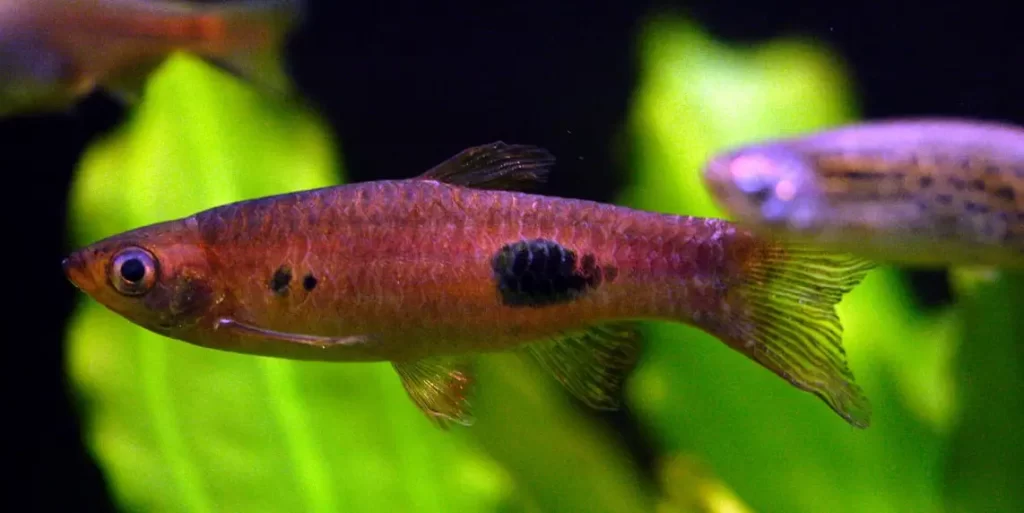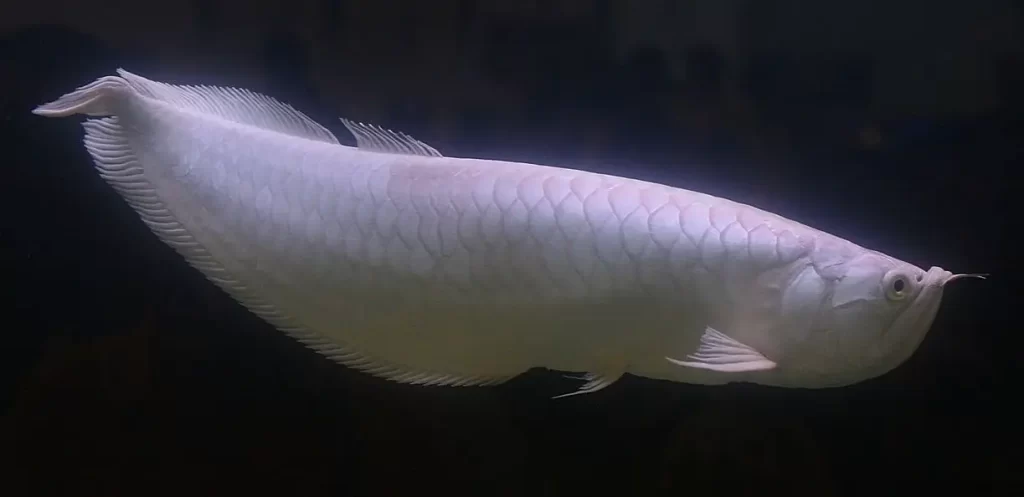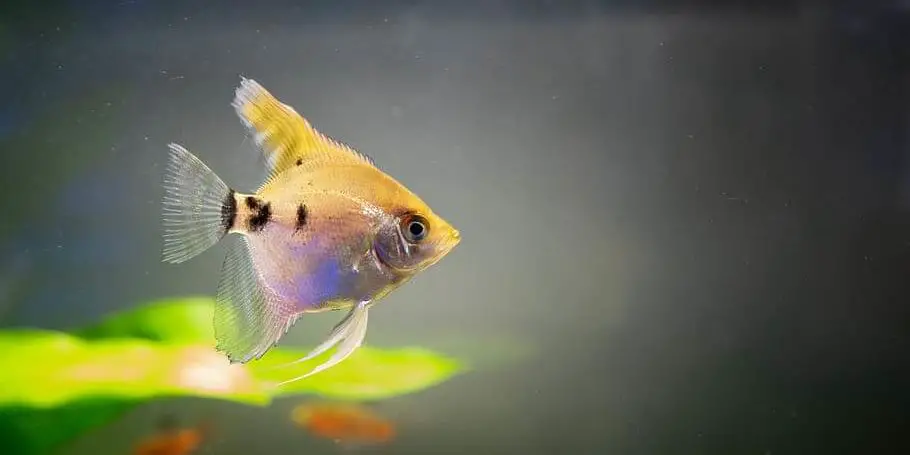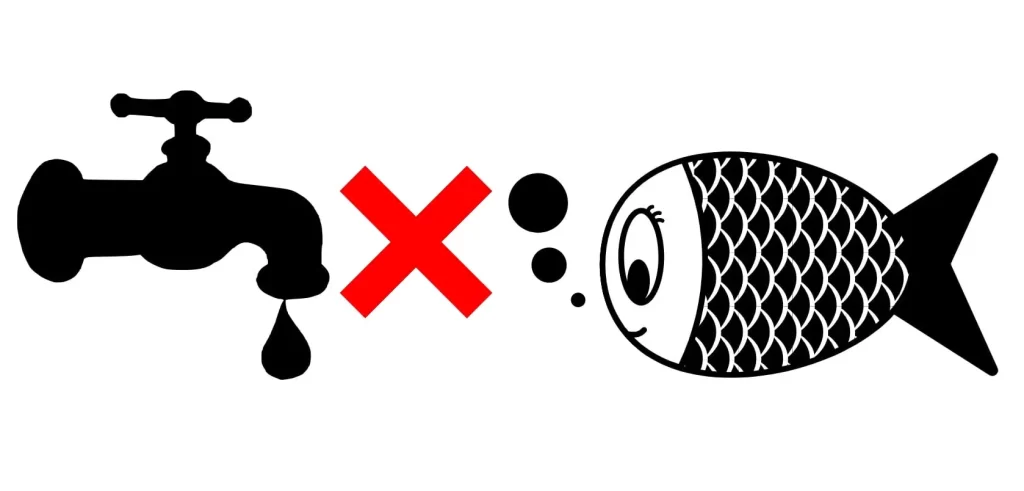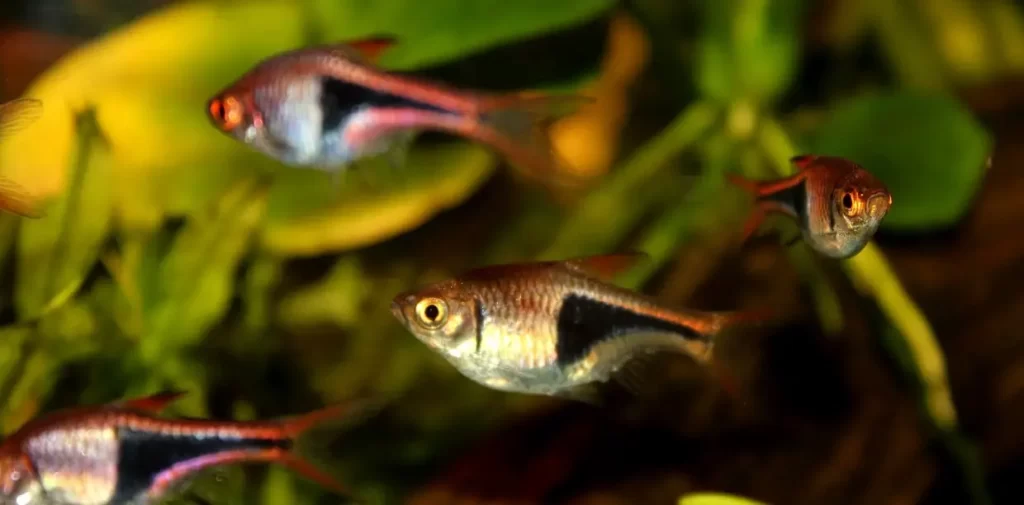Rasbora is a peaceful freshwater inhabitant belonging to the family Cyprinidae. This fascinating and vibrant colored fish is about 1.5 to 2 inches long and is suitable for small to a mid-size aquarium. Rasbora is an easy to care omnivorous fish. This is why people highly prefer species of Rasbora. As an experienced aquarist who has kept Rasbora for more than ten years, I will share all my knowledge on Rasbora fish diseases, its cause, symptoms, treatment, and preventive measures.
Fishes are likely to get diseases just like any other pets. The main factors of a fish getting sick are the quality of water, stress, the temperature of the water, ammonia, and dissolved oxygen.
Prevention is Better than Cure
It is quite difficult to cure fish diseases in comparison to other pets. So, when it comes to fish diseases, it is better to prevent the fish from getting diagnosed with diseases.
I have noticed a lot of aquarists (especially beginner aquarists) not giving much attention to their tank environment. In contrast, they are the one who shows more grief when their fish gets some disease due to the carelessness they showed. I have listed the healthy habit I follow to prevent my fish from getting any disease.
- Maintaining your tank’s water parameter is the must. Since most of the disease is caused due to imbalance in water parameters like pH, Ammonia, etc., constantly monitoring and maintaining these parameters will significantly reduce your Rasboras chance of getting infected with the disease.
- Set up a good water filter system on your aquarium. Especially if your tank is too big because it’s very hard to do a constant water change and cleaning on big tanks.
- Provide a fully balanced diet for your fish. Include vitamins and protein-rich nutrients on a diet.
- Never overfeed your fish. Even if you over gave food to your Rashbora, don’t forget to siphon uneaten/waste food from the container.
I cannot guarantee that following these steps will make your fish completely immune to disease, but following these steps will certainly reduce the change of your fish infected with disease drastically.
Rasbora Fish Diseases and Treatment
Fin and Tail Rot
Fin and Tail Rot is a common bacterial fish disease that is preventable. Experts and researchers haven’t found the exact bacteria that cause Fin and Tail Rot in Rasbora Fish. But some of the bacteria that may cause fin and tail rot are: Flexibacter spp, Cytophaga spp, Pseudomonas spp, and Flavobacterium columnarae. Poor water quality is the main reason for this disease. Rot can also take place from the previous wound or rash. Fin/Tail Rot causes the fin to rot slowly by destroying the tissue from the edge to the base of the fin.
Symptoms
- Inflammation on the edges
- Discoloration of the fin or tail
- Loss of appetiteLethargic Wearing off a part of the fin or tail
Cause
- Poor water quality Overfeeding the fish
- Overcrowding the tank
- Stress factors
- Low-quality food
Treatment
- Change the water and vacuum the debris frequently
- Check the pH and temperature of the water
- Avoid overfeeding Add aquarium salt to the water
- Fish antibiotics such as Doxycycline Hyclate, Amoxicillin, and Ciprofloxacin are effective in controlling bacterial infection/fin rot in fish.
Columnaris
Columnaris is a highly contagious fish disease caused by Flavobacterium Columnare. It is a common Rasbora fish diseases. This disease only affects freshwater fish and starts by forming flat white patches on the body of the fish. Columnaris is very hard to identify and is often mistaken with other fungal diseases.
A lot of research centers have dedicated a decade of their effort to find the root cause of columnaris disease; they have got a significant achievement in finding a lot about columnaris bacteria. But despite the lot of research done on columnaris, the pathogenesis of columnaris disease is not discovered. Hence adopting preventive measures is best against Columanaris.
Symptoms
- Bleached patches on the body
- White spots on gill filament Accumulation of mucus on gills, head, and dorsal region
- Lethargic Loss of appetite
Cause
- Overcrowding the tank
- Poor nutrition
- when the water temperature is above 80 degrees Fahrenheit
- Low dissolved oxygen level
Treatment
- Lower the temperature of the aquarium.
- Antibiotics such as Nitrofurazone and Kananyein is effective in controlling Flavobacterium Columnare.
- Fish vaccines can also be given consulting veterinarians.
Viral Haemorrhagic Septicaemia
Viral Haemorrhagic Septicaemia (VHS) is a viral fish disease that occurs in spring and autumn at 14 degrees Celsius. VHS usually affects young fish.
The agent that causes of VHS is a novirhabdovirus. You can confirm if your fish have VHS by a technique like virus isolation followed by enzyme-linked immunosorbent assay (ELISA).
Symptoms
- Pale gills and dark body-color
- Evident hemorrhage in the eyes and skin
Cause
- Contaminated water
- Direct contact with infected fish
- Oral ingestion of infected fish such as cannibalism
Treatment
- Common disinfectants such as formalin, iodophor disinfectant, sodium hydroxide, and sodium hypochlorite should be used to treat VHS.
- Quarantine(Isolating the infected fish) can control further outbreaks.
Dropsy
Dropsy is a tropical fish disease that causes swelling in the abdomen due to accumulation of water and other fluids.
You cannot call Dropsy a disease but more of symptoms to more severe disease. You can immediately tell your Rasbora have Dropsy if your fish have a swollen abdomen and irregular swimming pattern.
Symptoms
- Bloated belly
- Pale gills
- Pinecone appearance in which scales stand out
- Swollen anus
- Feces become stringy
- Lethargic Loss of appetite
Cause
- The agent that causes dropsy is Aeromonas bacteria
- Poor nutrition Ammonia or nitrite spiked in aquarium water
Treatment
- Quarantine the infected fish.
- Add 1 tbsp of aquarium salt into the quarantine tank.
- Change the water frequently.
Pop-eye Disease
Popeye (a.k.a exophthalmia), is a condition in which one or both eyes of the fish swell as a result of a bacterial infection. If your Rasbora fish has pop-eye only on one eye, then it can be due to fighting with other fish or collisions with decoration/plants on your tank.
Symptoms
- Protruding or swelling of one or both eyes
Cause
- Poor water quality
- Injury from a fight with another fish
- or scraping the eye on a hard object.
- Bacteria, fungi, and parasites cause infection.
Treatment
- Feed vitamin-enriched foods to the fish
- Change the water daily
Eye-cloud / Cloudy Eyes
Eye-cloud is a disease in which the eyes of fish gets covered with grey or opaque film mainly caused by internal parasites or bacterial infection. Fish may get Eye-cloud if their diet lacks vitamins or if their environment has a low pH level.
Symptoms
- Grey or opaque film covers the eyes of the fish
- Difficulty in swimming and finding food
Cause
- Poor water quality
- High levels of ammonia, nitrite, and nitrate in aquarium water
- Sudden water temperature change
Treatment
- The ammonia level should be zero.
- Regular water change. Avoid overdose of medication.
- Eliminate chlorine by using a water purifier.
Mouth Fungus
Mouth Fungus is a bacterial infection that affects the face, gill as well as the jaw of the fish. This infection produces cotton wool textured growth in the infected areas and makes it difficult for the fish to breathe. The most common infectious fungi are Saprolegnia and Achyla.
Symptoms
- Cottony white patches around the mouth and chin
- Stringy feces
- Loss of appetite
- Pale gills
Cause
- Poor water quality
- Decomposition of large amounts of dead and decaying organic material in the water
Treatment
- Keep the condition of water healthy.
- Avoid stress
- Test the water for ammonia, pH level, nitrite, nitrate, and chlorine and neutralize them.
Furunculosis
Furunculosis is a chronic and highly contagious bacterial disease mostly found in salmonid fishes. The gram-negative bacterium causes this disease. Furunculosis is characterized by the formation of boil-like lesions on various tissues of the body.
Symptoms
- Darkening of skin
- Rapid breathing Hemorrhagic patches on the dorsal body surface
- Pale or congested gillsLoss of appetite
- Lethargic
Cause
- Caused by a contagious bacteria called Aeromonas Salmonicida.
Treatment
- Antibiotics and vaccination are used to control this disease.
- Iodine can be used to decontaminate the water.
- Avoid stress in fish.
Fish Fungus / Fungal Infections
Fungal infections, also known as mycosis, are the most common diseases of fish. It is also one of the most common Rasbora fish diseases. Although Fish Fungus can be cured easily if treated properly, it has the potential to damage fish liver, brain, and other vital organs, making it a fatal disease.
Symptoms
- Grey or white patches on the skin/gills
- The body may turn brown/green
- Slimy mass growing out on the skin
Cause
- Caused by fungi such as Cotton wool fungus, Ichthyosporidium, Exophiala sp., etc
- Unclean environment
- Water contaminated with dead and decaying matter
Treatment
- Eliminate chlorine in water by using a water purifier.
- Increase the temperature of the water up to 77 degrees Fahrenheit.
- Quarantine the infected fish.
- Add one tbsp of aquarium salt in the quarantine tank.
- Medication treatment, such as malachite green, Potassium Permanganate, formalin, and povidone-iodine solutions are effective in controlling fungi.
Velvet
Velvet or rust or gold dust disease is a disease caused by a parasite called Oodinium. Once your Rasbora is contaminated with Velvet, it’s cell will be damaged, leading to clamped fins, loss of appetite and other symptoms described below.
Symptoms
- Rubbing body against hard surfaces
- Fins are held close to the body
- Fine yellow or brown colored velvety film on the body
- Weight loss
- Lethargic
- The skin peels off of not cured on time
Cause
- Velvet is caused by a small parasite called Oodinium.
Treatment
- Increase the water temperature.
- Add one tbsp of aquarium salt into one gallon of water.
- Add copper sulfate in the aquarium water for ten days.
- Atrabine (Quinacide Hydrochloride) is also used to treat Velvet.
Ich
Ich is also one of the most common rasbora fish diseases. White spot disease or ich is a disease caused by an ectoparasite called Ichthyophthirius Multifillis. Ich is a contagious and persistent disease in which the parasite attaches to the fish’s body and forms tiny white spots.
Symptoms
- Tiny salt-like crystals on the body
- Slimy coat on the affected areas
- Rapid breathingRubbing body against hard surfaces
- Hiding behavior Loss of appetite
Cause
- Sudden change in environmental conditions such as the temperature of the water
- Direct contact with infected fish
- Decorating plants that contain cyst of the parasites
Treatment
- Increase the temperature up to 71.6-86 degrees Fahrenheit.
- I highly recommend anti-parasitic medication and Malachite green for treating Ich.
Anchor Worms
Anchor worm is a parasite rather than a worm. They are similar to the ticks in dogs.
Symptoms
- Anchor worms are visible with the naked eyes
- Red sore on the area where the worm is attached
- Inflammation Breathing problem
- White/green worms attached on the wound
- Lethargic
Cause
- Adding a new fish in the aquarium which is already infected
- Skipping proper quarantine of the infected fish
- Decorating aquarium with live plants that contain cyst of the parasites
Treatment
- Potassium Permanganate is the best treatment for Anchor worms.
- Remove the parasite with a pair of tweezers.
- Add one tbsp of aquarium salt in the aquarium water.
Fish Lice
Fish Lice are ectoparasites that attach themselves to the body of the fish and can also swim in the water freely. It is a common Rasbora fish disease but can be prevented easily with proper care of your tank. They range from .5 to 1.3 inches long with an oval-shaped, flattened body formed by a broad carapace.
Symptoms
- Paleness, Inflammation, and redness on the affected areas
- Rubbing body against hard surfaces
Cause
- If the new fish is not quarantined
- The decorating plants may carry the parasites
Treatment
- Hold the fish in a damp cloth and remove the visible lice with a pair of tweezers.
- Treat the red spots by using Neosporin.
- Add one tbsp of aquarium salt in the aquarium water.
Hole in the Head
Hole in the head is a condition in which a flagellate parasite creates pit like holes in the head and other regions of fish. If not treated properly, it is one of the fatal Rasbora fish diseases. The primary reason for Hole in the Head (HITH) is poor water quality or your fish’s poor immunity/resistance.
Symptoms
- Hollow pits on the head and lateral lines
- Bloated belly
- Holes become larger if the treatment is not initiated
- Loss of appetite
Cause
- Hole in the head is caused by a flagellate parasite called Hexamita.
- Mineral or vitamin imbalance Poor water quality
- Overcrowding
Treatment
- Provide proper vitamin or mineral supplementation and nutrition
- Water quality must be closely watched.
Swim Bladder Disorder
Swim bladder disorder or floating disorder is a condition in which the swim bladder of your fish isn’t working properly, thus affecting the ability of a fish to float or to maintain buoyancy.
Symptoms
- Floating upside down or “dead man’s position.”
- The fish sinks to the bottom and has difficulty in rising to the surface
Cause
- Physical injury
- Birth defect
- Overfeeding Lower water temperature
- Feeding of frozen peas
- Poor water condition
Treatment
- Change the water regularly.
- Avoid overfeeding
- Add one tbsp of aquarium salt in the aquarium water.
- Keep the temperature of the water a bit higher.
Tumors
Tumors are the clump of cells that grow under the fish’s skin. If the tumor is internal or cancer, then you can only see the symptoms in the late state where saving your Rasbora life is almost impossible.
Symptoms
- Bumps or lumps under the fish’s skin
- Reduction on fish’s ability to eat or swim.
Cause
- Genetic predisposition Viral infection
- Sometimes a viral infection can lead to cancer
Treatment
- Quarantine the infected fish.
- Apply Hydrogen Peroxide in the affected areas of the fish.
- Consult a veterinarian for a surgery
Gill Parasites
Parasites that infect a fish’s gills and cause various diseases and disorders are gill parasites. As the name suggests, Gill Parasite affects the gill of your Rasbora. Your fish will have swollen/pale gills, therefore causing difficulty in breathing.
Symptoms
- Difficulty in breathing
- The infected fish becomes pale
- Rubbing against hard surfaces
Cause
The common parasites that infect the fish’s gills are Dactylogyrus and Neobenedenia.
Treatment
- Quarantine the infected fish.
- Medications such as formalin and praziquantel are very effective in killing the parasites.
Internal Parasites
The parasites that live in the digestive system of fish are internal parasites. Hookworms, roundworms, and tapeworms are one of the largest group of worms which carry a variety of internal parasites and are quite difficult to diagnose.
Symptoms
- Loss of appetite
- Weight loss
- Worms coming out from the anal vent of an infected fish
Cause
- Worms carrying internal parasites
Treatment
- Consult the veterinarian for a proper treatment plan.
- Use fish dewormer such as Fenbendazole or Praziquantel.
Ammonia Poisoning,
One of the leading causes of death of aquarium fish is Ammonia Poisoning. Ammonia Poisoning is a condition caused by the building up of nitrites and ammonia within the water. Not only This disease is also one of the most common rasbora fish diseases, but it’s also very common among all fish. The main trigger for ammonia poisoning is tap water and the decay of organic substances like food and dead leaves inside the aquarium.
Cause
- Higher ammonia levels in water cause ammonia poisoning and displaced oxygen
Treatment
- Regular change of water
- Check the pH level, ammonia, nitrite, and nitrate in the aquarium water frequently and minimize them.
Slime Disease
Slime is a parasitic disease that causes excess mucus covering the body of the fish. This disease is also one of the most common rasbora fish diseases. The major cause of this disease is stress, which is triggered by fish by situations like poor water conditions, overcrowding, improper diet, etc.
Symptoms
- Grey/white to blue mucus covering the body in excess
- Rapid breathing Loss of scales due to scratching on hard surfaces
Cause
- Malnutrition Sudden change in temperature
- Overcrowding
Treatment
- Improve water quality by changing the water regularly and checking the pH level, ammonia, and nitrite.
- Put the least amount of stress on fish.
- Copper-based treatments such as Malachite green is effective in treating slime disease.
- Add one tbsp of aquarium salt in the aquarium water.
Prevention
- Avoid overcrowding of fish
- Provide fresh and high-quality food in small quantity
- Changing the water regularly Disinfecting the appliances of fish
Conclusion
Although Rasboras are hardy fish, they also get infected with various diseases if you don’t take care of the fish and the environment your Rashbora lives. From my experience having faced a lot of Rasbora fish diseases and treating them, I conclude saying that Prevention is always better than care. Once your fish is infected with the disease, it’s real grief to watch them hurt, and the treatment process is also very delicate.
People prefer to keep fish as their pets because we believe it brings peace and harmony. Fish can also have a calming effect on people, thus lowering their heart rate and blood pressure. So, with proper care and a suitable environment, fish can be nurtured at home easily.
Reference
Image Credit: https://en.wikipedia.org/wiki/en:Creative_Commons

